Let’s Compost, Part 1
First, let me convince you why you should compost dry leaves in your premises.
Because it is the right thing to do.
Because it completes the nature’s cycle and follows soil-to-soil principle. (Link)
Because composting and not burning leaves, reduces air pollution.
Because soil that has lost nutrients, gets nutrients back.
And quite soon, it would be mandatory.
YES!! Recently, chief minister of Maharashtra announced that there is no space left in Maharashtra for any more garbage dump yards. Condition would not be very different in other states.
Let’s understand journey of a leaf in a city
Some municipal corporations currently do collect leaves from the citizens. 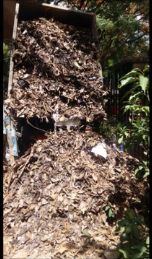
Some proportion of it is composted at the garbage depot, in some cities. Yet this quantity is negligible compared to the total quantity of dry leaves in the city.
What happens to the rest?
Well, those leaves are sent to dump yards, usually to the villages on the outskirts of the city.
Yes, I can read your mind. Right, leaves are biodegradable. So, what happens if they are sent to dump-yards? They will decompose there, anyway. What is all this fuss about composting.
You are right. Let’s discuss what exactly is wrong with this system.
Leaves along with waste like kitchen waste, plastic, paper, glass, just about everything is dumped together at the dump-yards.
Heaps and heaps of garbage is deposited every day.

Only biodegradable components from that waste would decompose. Decomposing process when happens in presence of enough oxygen, it produces Carbon dioxide.
When same process happens in absence of oxygen, it is called anaerobic. In simple terms, material does not decompose, but rots. Output of that process is methane gas. Methane is worse than carbon dioxide when it comes to its contribution to global warming. Its global warming potential is believed to be 21 times more than that of Carbon dioxide.
Methane also has a foul smell. (Keep kitchen waste in a plastic bag and tie its mouth. After a week, untie and check. The horrible rotting smell that emanates is the methane gas.)
Imagine, such a large quantity of organic waste decomposing and giving out methane. Consider, what are we doing to our neighbors in these villages, by dumping all our waste in their yard?
AND THAT IS NOT ALL.
Methane is highly inflammable. Did you read about the dump-yards catching fire? Such fires occurred at Deonar near Mumbai in 2016 and 2018, and at Ghazipur in east Delhi in 2017. When methane from rotting organic matter in landfills comes in contact with air, such fires occur. It took almost a week for fire brigade to extinguish fire at Deonar. Imagine the smoke, the pollution and risk to the nearby residents.
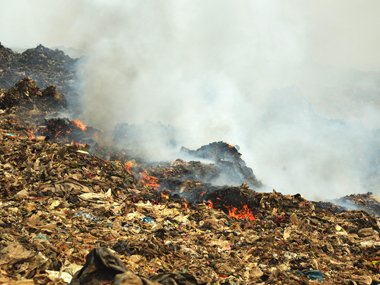
Deonar fire
Air pollution and fire hazard are the two dangers of sending organic waste to the dump-yards.
There is one more flip-side.
Tree roots absorb various nutrients from the soil. Some proportion of those nutrients is present in the fallen leaves. When we throw away the leaves, nutrients that are taken from the soil, are never returned to it.
Every year, that soil in your backyard is losing nutrients.
So, sending away dry leaves creates fire and health hazard, it causes air pollution and it deprives our soils of nutrients.
It is LOSE -LOSE – LOSE situation all along.
These are the reasons why we should not send dry leaves to dump-yards. Same argument exists for other organic waste i.e. kitchen waste. We will discuss that as well in subsequent blogs.
And referring to the statement by Maharashtra chief minister, we are running out of spaces for dump-yards.
Pretty soon, there will not be any space left to deposit our daily waste.
What happens when that day dawns?
Well, municipalities across the country will make it mandatory for citizens to compost the biodegradables.
So, we either start now or it would be forced on us in near future, anyway.
What say?
Same fire and health hazard and loss of nutrients challenge exist when leaves are burnt.
Leaf piles when smothered, give out carbon monoxide. Carbon monoxide’s global warming potential is more than that of Carbon dioxide. It is extremely hazardous to our health.
Have I convinced you enough against leaf burning or sending leaves to dump-yards? I do hope so 😊
Yes, I agree we cannot have heaps and heaps of leaves in our backyards and on our streets. Let’s discuss what we should do with the leaves.
Strategy is
MULCH – COMPOST – DONATE
Let’s start with composting today
In next few blogs we will discuss various methods of composting in detail, and pros and cons of each method.
In this blog we will learn how to make easy, cost-effective composter.
If you have never done composting before, if you are not sure which method is right for you, this is the way to go.
This is easy-to-make composter and we would be going for a very low-aim composting here.
We will be composting dry leaves of the tree in your premises and we will be giving back nutrients to the soil near that tree.
Very simple method, nothing complicated I promise!
Materials needed
| Pigeon mesh (Available in any hardware store. UV-treated, can withstand sun and rains) |
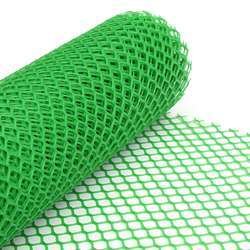 |
| Zip ties (Available in any hardware store) |
 |
Time to build: 10 Minutes
Installation: 15 Minutes
Method:
- Buy 8 feet x 3 feet pigeon mesh (Usually Rs. 6 sq. feet)
- Buy a pack of zip ties (Usually comes in pack of 30)
- Roll the pigeon mesh, with some overlapping.
- Secure with zip ties so that pigeon mesh remains in cylindrical shape
- With 8 feet length of pigeon mesh, you will get a cylinder with approximate radius of 2.5 to 3 feet
- Place the cylinder under the tree which leaves you would be composting
- Dig out area around it, place the cylinder and then press the dug soil, to provide stability to the cylinder. If it is not stable, it will bend/ topple with the weight of the leaves.
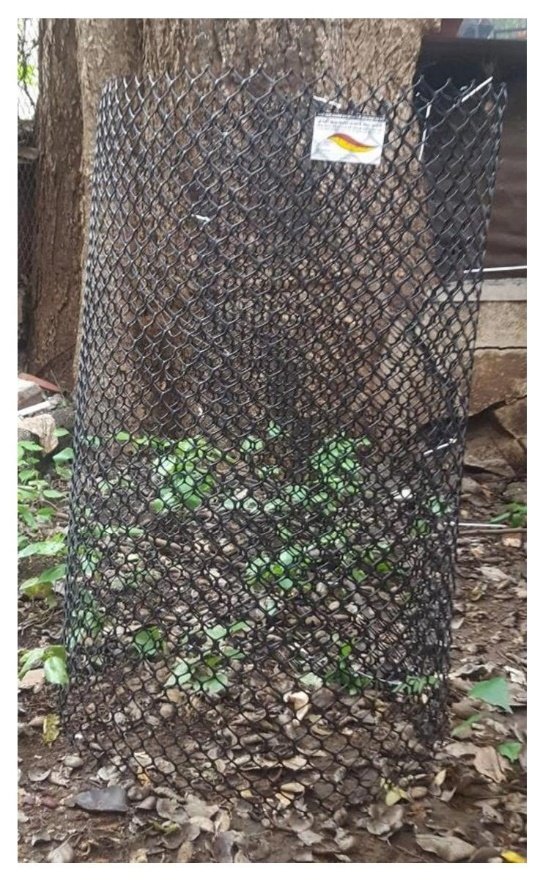
- Bamboo sticks/ old curtain rods can also be used. Just erect 3 such rods and place the cylinder around it.
That’s all. It is done.
Now it is time to start composting.
- Deposit leaves in the composter ever day or as they fall.
- Add handful of culture once a week. (Culture can be soil/ cow dung, compost borrowed from a friend)
- Water this composter every day as you would water your plants. Just enough water so that leaves are moist, but not wet.
- Beauty of this composter is that even if you water more by mistake, excess water will drain.
It is a bottom-less composter. Leaves are in contact with the soil. We will get all the help from the soil insects and microbes.
After around 2 months, you will find, compost will be ready in the lowest layers. Stop depositing any more leaves. Continue watering.
After a month, just lift the composter and let the ready compost fall to the ground. Spread the compost and let it be. Done!!
We have given nutrients back to the soil and in turn to the tree.
And you have made your first, successful compost.
Go ahead, do try it.
Here is the poster for you. Right Click on it, select save as and download. Take a color print out and display it proudly. Yes, you have earned it.
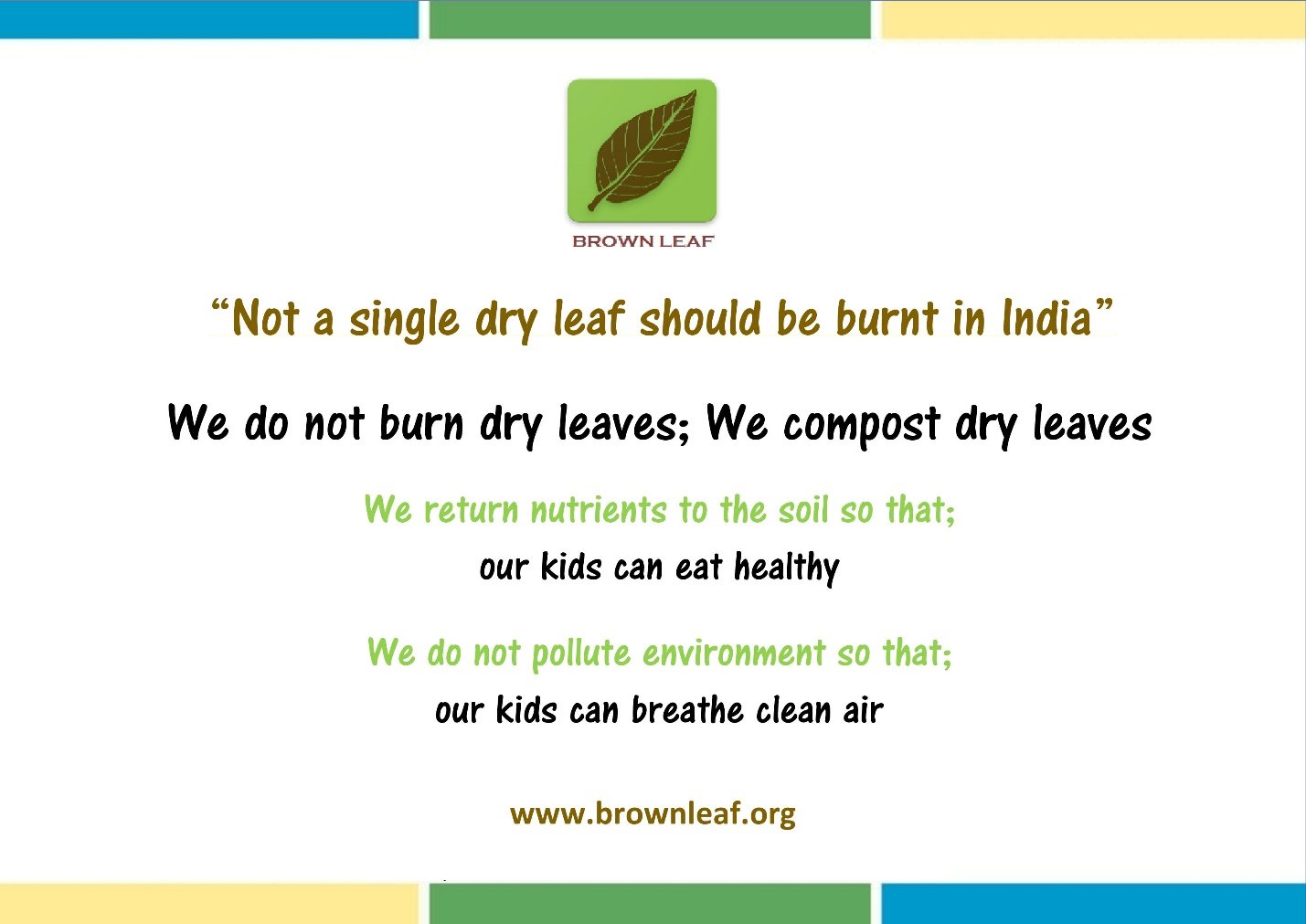
If you face any difficulty, if you have any problem, reach out to us at pune.brownleaf@gmail.com
It is our responsibility to give you first successful compost. Remember, we are just a click away 😊
All the Best!! HAPPY COMPOSTING!!


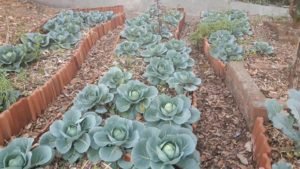
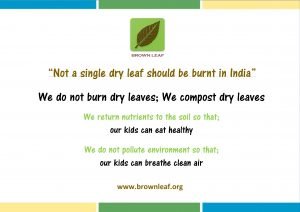
I want to join you to help Mother Earth please guide me
I m staying at Gultekdi Vidyasagar colony
Thank you so much. Do share your number at pune.brownleaf@gmail.com.
Thank you all,we need garden soil and we have ton of dry leave, now I know.
Happy Composting :-).. Feel free to drop a msg to pune.brownleaf@gmail.com if you need any help with composting
Amazing. Great Post! Pigeon mesh could be replaced by bamboo/cane containers. वेताच्या टोपल्यांप्रमाणे असे उभे कंटेनर बनवता येतील. That would make it more eco-friendly.
Absolutely.
मैं समझ नहीं पा रही हूं कैसे खाद बनाऊं
Vijaya madam,
Did you download the guide from the site? Let me know where you are stuck.